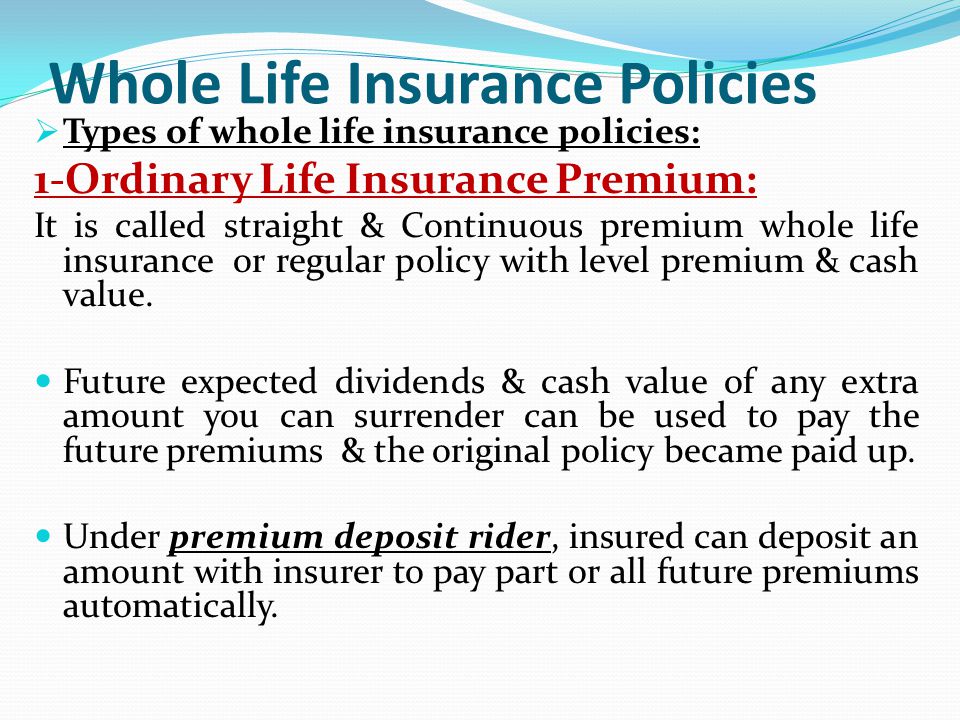As an example, if a residential or commercial property has a value of $200,000 and the insurance coverage service provider requires an 80% coinsurance, the owner must have $160,000 of property insurance coverage. Owners may include a waiver of coinsurance provision in policies. A waiver of coinsurance stipulation gives up the house owner's requirement to pay coinsurance.
In some cases, Visit website however, policies may consist of a waiver of coinsurance in the event of a total loss. Coinsurance is the quantity a guaranteed should pay versus a health insurance coverage claim after their deductible is pleased. Coinsurance likewise applies to the level of home insurance that an owner must purchase on a structure for the coverage of claims.
Both copay and coinsurance provisions are ways for insurer to spread out risk among individuals it insures. However, both have advantages and drawbacks for consumers.
Lots of or all of the items featured here are from our partners who compensate us. This might affect which items we compose about and where and how the item appears on a page. Nevertheless, this does not influence our evaluations. Our opinions are our wesley woods service experts own. Health insurance coverage is unlike any other insurance coverage you buy: Even after you pay premiums, there are complicated out-of-pocket costs like deductibles, copays and coinsurance.
It is essential to comprehend the fundamentals of health insurance so you can make the right financial choices for your family prior to you require care. how much is flood insurance in florida. That way, you can focus more on healing when the time comes. Here's our primer on how the expenses of medical insurance work. Prior to you comprehend how it all interact, let's brush up on some typical medical insurance terms.
Like a fitness center membership, you pay the premium monthly, even if you do not utilize it, or else lose coverage. If you're lucky sufficient to have employer-provided insurance, the business typically chooses up part of the premium. An established rate you pay for health care services at the time of care.
The deductible is just how much you pay before your health insurance coverage begins to cover a larger portion of your bills. In general, if you have a $1,000 deductible, you should pay $1,000 for your own care out-of-pocket prior to your insurance company begins covering a higher part of expenses. The deductible resets annual.
Some Known Facts About What Is The Cheapest Car Insurance.
For instance, if you have a 20% coinsurance, you pay 20% of each medical expense, and your medical insurance will cover 80%. The most you might have to pay in one year, expense, for your healthcare prior to your insurance coverage covers 100% of the expense. Here you can see the maximums enabled by the federal government for private prepare for this year.
Some policies have low premiums and high deductibles and out-of-pocket maximum limits, while others have high month-to-month rates and lower deductibles and out-of-pocket limits. In basic, it works like this: You pay a regular monthly premium just to have health insurance coverage (what does renters insurance not cover). When you go to the medical professional or the hospital, you pay either full expense for the services, or copays as laid out in your policy.
The staying percentage that you pay is called coinsurance. You'll continue to pay copays or coinsurance up until you have actually reached the out-of-pocket maximum for your policy. At that time, your insurer will begin paying 100% of your medical bills till the policy year ends or you switch insurance coverage strategies, whichever is initially.
If you use an out-of-network physician, you might be on the hook for the entire expense, depending on which type of policy you have. This brings us to 3 brand-new, related definitions to understand: The group of medical professionals and providers who accept accept your medical insurance. Health insurance providers negotiate lower rates for care with the doctors, hospitals and clinics that are in their networks.
If you get care from an out-of-network company, you might have to pay the entire bill yourself, or just a part, as indicated in your insurance coverage policy summary. A company who has actually consented to work with your insurance coverage plan. When you go in-network, your bills will typically be more affordable, and the costs will count towards your deductible and out-of-pocket optimum.
Your costs would be different based on your policy, so you'll wish to do your own estimations each year when dealing with a medical cost. Vigilance is single and has an annual deductible of $1,200. Her insurance strategy has some copays, which do not count towards her deductible. After she fulfills the deductible, her insurer pays 80% of her medical expenses, leaving Vigilance with coinsurance of 20%.
Since she goes to an in-network supplier, this is a totally free preventive care go to. Nevertheless, based upon her physical, her main care doctor thinks Prudence needs to see a neurologist, and the neurologist suggests an MRI. Copays for an in-network specialist on her strategy are $50, which she needs to westlake financial telefono pay, while her insurer will cover the remainder of the neurologist's cost.
The 8-Second Trick For How Much Is Domino's Carryout Insurance

Imaging scans like this are "based on deductible" under Prudence's policy, so she should spend for it herself, or out-of-pocket, since she hasn't met her deductible yet. So her insurance company won't pay anything to the MRI facility. $50 for the neurologist copay + $1,000 for the scan = $1,050. Later on in the year, Prudence falls while hiking and hurts her wrist.
After the copay, ER charges were $3,400. Her deductible will be used next. Prudence paid $1,000 of her $1,200 deductible earlier in the year for her MRI, so she's accountable for $200 of the ER costs prior to her insurance company pays a bigger share. After deductible and copay, the ER charges total $3,200.
$ 100 for the ER copay + $200 for remaining deductible + 20% coinsurance ($ 640) = $940. Vigilance has actually now paid $1,990 toward her medical costs this year, not including premiums. She has actually also met her yearly deductible, so if she requires care once again, she'll pay only copays and 20% of her medical bills (coinsurance) till she reaches the out-of-pocket optimum on her strategy.
Understanding healthcare can be confusing. That's why it's helpful to know the significance of frequently utilized terms such as copays, deductibles, and coinsurance. Understanding these important terms may assist you understand when and just how much you need to pay for your healthcare. Let's take an appearance at the meanings for these 3 terms to much better comprehend what they imply, how they collaborate, and how they are various.
For instance, if you injure your back and go see your medical professional, or you require a refill of your child's asthma medicine, the quantity you spend for that go to or medicine is your copay. Your copay amount is printed right on your health insurance ID card. Copays cover your portion of the cost of a medical professional's check out or medication.

Not all plans use copays to share in the cost of covered expenditures. Or, some plans might utilize both copays and a deductible/coinsurance, depending on the type of covered service. Also, some services might be covered at no out-of-pocket cost to you, such as yearly examinations and particular other preventive care services. * A is the quantity you pay each year for a lot of qualified medical services or medications prior to your health insurance starts to share in the cost of covered services. what does renters insurance not cover.
